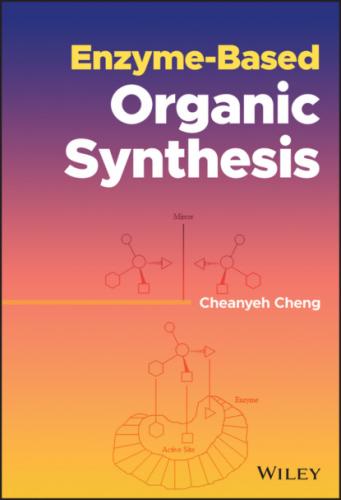Scheme 2.28 Enantiopure asymmetric microbial Baeyer–Villiger oxidation of rac‐bicyclo[3.2.0]hept‐2‐en‐6‐one.
2.1.8 Peroxidation Reactions
In mammalian cells, hydrogen peroxide and organic hydroperoxides are synthesized continuously during aerobic metabolism. Peroxides can damage the cell components by their formation of highly reactive hydroxyl radicals that can initiate lipid peroxidation, to oxidize amino acid side chains in proteins, and to cause DNA strand breaks and base modification [120]. Therefore, peroxides must be detoxified continuously to prevent oxidation of cellular components by peroxides or peroxide‐derived reactive oxygen species (ROS). In addition, the generation of peroxides in cells consumes oxygen, which causes the disposal of peroxides particularly important for human brain because brain cells utilize 20% of the oxygen used by the body [121]. In cells, H2O2 is produced by the disproportionation of superoxide generated through the mitochondrial respiratory chain as a by‐product with superoxide dismutases (SODs). Besides, H2O2 can also be produced by the reactions using oxidases such as monoamine oxidases [122]. Stereospecifically defined organic peroxides are generated in cells through the pathways of prostaglandins and leukotrienes by cyclooxygenases and lipoxygenases. Hydroperoxides are also formed by unspecific oxidation of polyunsaturated fatty acids in membranes by radical‐mediated lipid peroxidation [123].
Although not too many enzymatic syntheses of peroxides can be found in literature because of their substrate‐dependent processes, peroxides are of interest to synthetic chemists due to their potent antimalarial and antimicrobial properties [124–126]. Crude enzyme from marine green algae, Ulva pertusa, has been used for the enantioselective α‐hydroxylation of long‐chain saturated and unsaturated fatty acids to corresponding (R)‐2‐hydroperoxy acids (Scheme 2.29) with >99% e.e. enantiopurity. The product of the same hydroperoxylation performed with either brown or red algae on palmitic acid was also (R)‐2‐hydroperoxy acid in >99% e.e. enantiopure.
Scheme 2.29 Enantioselective 2‐hydroperoxylation of saturated and unsaturated long‐chain fatty acids with crude enzyme of U. pertusa.
Lipid peroxidation has long been thought as a deleterious process. However, lipid peroxidation is a normal physiological process for eicosanoid synthesis or cell maturation in cell mediated reactions [123]. Furthermore, lipoxygenase‐catalyzed lipid peroxidation has been found highly enantioselective. For instance, the 2,2′‐azobis(2‐amidinopropane) hydrochloride initiated peroxidation of linoleic acid in the presence of human serum albumin has been proved to be regio‐ and stereoselective with a large amount of 13(S)‐hydroperoxy‐(9Z,11E)‐octadecadienoic acid [127]. Soybean lipoxygenase, the most studied of the lipoxygenase, has been used to catalyze the highly enantioselective and regioselective insertion of oxygen into the ω‐6 position of polyunsaturated fatty acids to form diene hydroperoxides [128–132]. A regioselective and stereoselective synthesis of 1‐stearoyl‐2‐[13′‐(S)‐hydroperoxy‐(9′Z,11′E)‐octadecadienoyl]‐sn‐glycero‐3‐phosphoch‐oline was also performed without contamination by any regio‐ and stereochemical isomers by a combination of lipoxygenase‐catalyzed peroxidation, lipase‐catalyzed stearoylation, and dicyclohexyl carbodiimide‐mediated esterification [133]. In this enzymatic peroxidation, linoleic acid is catalyzed by soybean lipoxygenase to give corresponding peroxide and is followed by treatment with diazomethane to produce methyl ester in 36% overall yield (Scheme 2.30).
Scheme 2.30 Peroxidation of linoleic acid with soybean lipoxygenase and subsequent production of its methyl ester.
Scheme 2.31 Mn‐LO mediated peroxidation of linoleic acid.
Manganese lipoxygenase (Mn‐LO) from the fungus Gäumannomyces graminis has been reported for the peroxidation of linoleic acid to give a major product (13R)‐hydro‐peroxy‐(9Z,11E)‐octadecadienoic acid (13R‐HPOD) and a new minor product (11S)‐hydroperoxy‐(9Z,12Z)‐octadecadienoic acid(11S‐HPOD) in a ratio of 1:5 (Scheme 2.31) [134]. An initial abstraction of the pro‐S hydrogen from C‐11 of linoleic acid is proceeded by Mn‐LO to produce a linoleoyl radical. This radical is reversibly oxygenated at C‐11 and further converted into (11S)‐HPOD. Alternatively, this radical is irreversibly oxygenated at C‐13 position to form (13R)‐HPOD. Similar transformations with lipoxygenase enzymes have been described by other research groups [129, 130]. An iron mini‐lipoxygenase from Cyanobacterium Cyanthece sp. (CspLOX2) was also reported by Feussner et al. to catalyze similar reactions [135].
Instead of the direct synthesis of enantiomerically pure hydroperoxides, enantioselective kinetic resolution using enzymes for racemic hydroperoxides is another effective method to reach the goal. The kinetic resolution of racemic hydroperoxides by horseradish peroxidase (HRP)‐catalyzed reduction for aryl hydroperoxides shows that both the catalytic efficiency and the stereoselectivity of HRP are highly dependent on the structure of the hydroperoxides (Scheme 2.32) [124, 136]. Other enzymes such as selenosubtilisin was also used for catalyzing the reduction of aryl hydroperoxides with thios via the catalytic cycle of glutathione peroxidase [137]. This reaction has also been applied for the kinetic resolution of racemic aryl hydroperoxides to form enantiopure hydroperoxides and alcohols [138, 139], and their corresponding enantioselectivity of enantiopure hydroperoxides and alcohols are shown in Scheme 2.33 [137].
Scheme 2.32 Kinetic resolution of aryl hydroperoxides by HRP.
Scheme 2.33 Enantioselectivities of the selenosubtilisin‐catalyzed kinetic resolution of hydroperoxides [137].
2.2 Reduction Reactions
2.2.1 Reduction of Aldehydes and Ketones
Chiral alcohols are important building blocks and among the most valuable key intermediates for the production of pharmaceuticals
